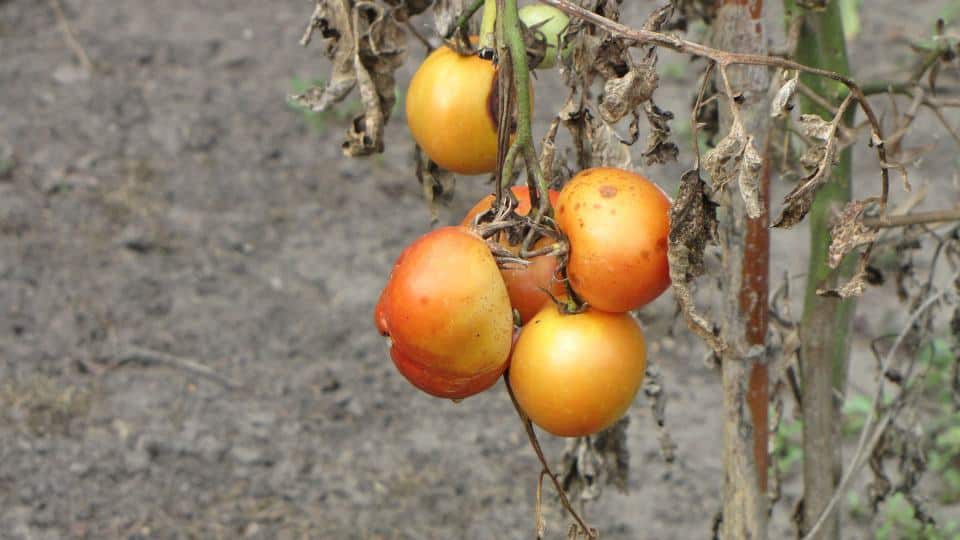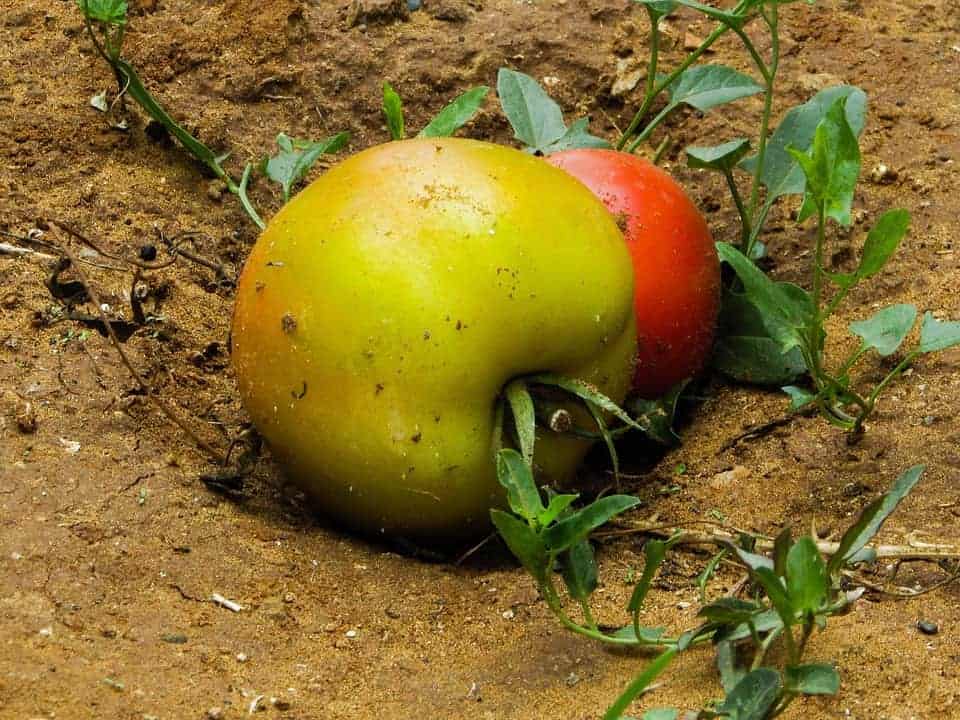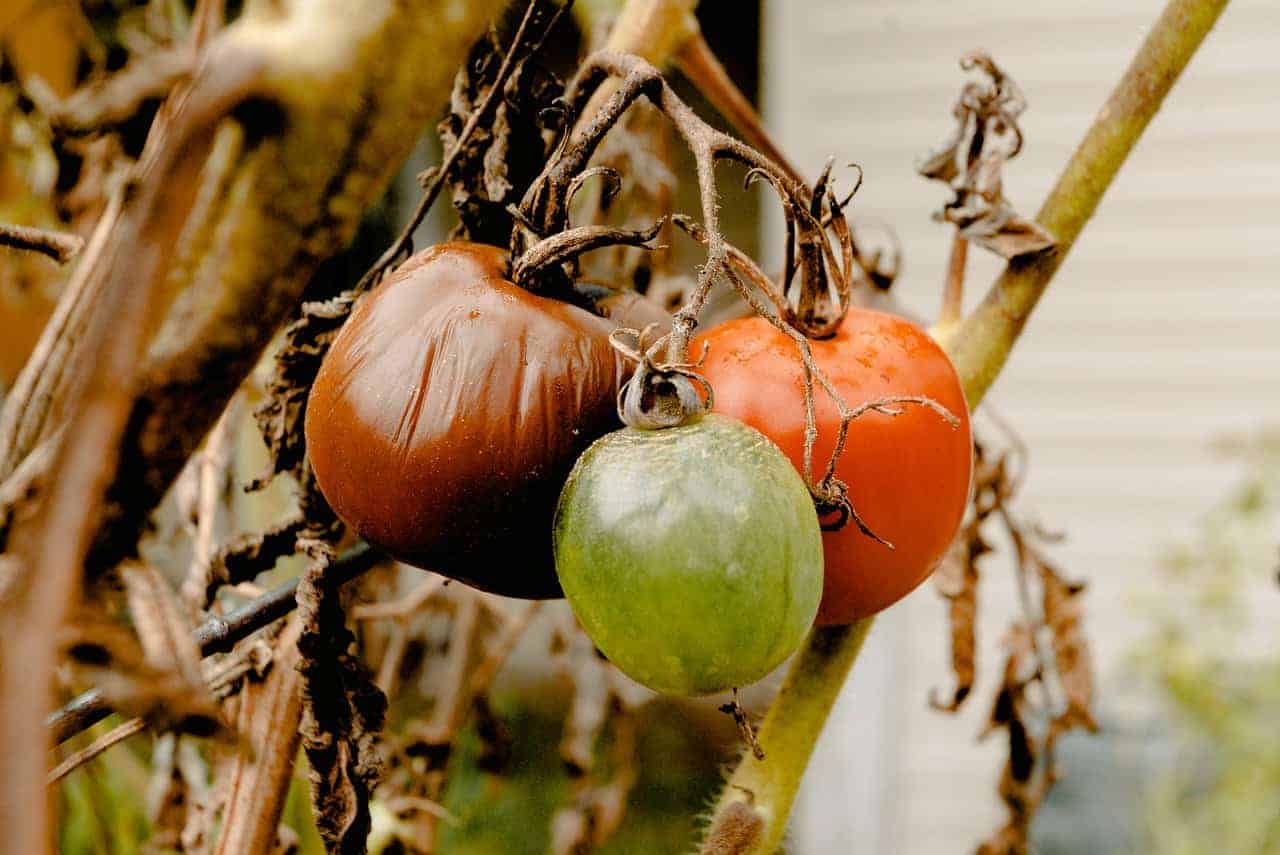You walk through your garden one lovely morning and everything is going well until you notice some green tomatoes sitting on the dirt underneath your tomato plants. It’s a tomato grower’s worst nightmare, especially when you’ve been looking forward all season to taste your own homegrown tomatoes. Fortunately, there are some things you can do to reduce the risk of this happening.
Tomatoes fall off the vine for a myriad of reasons, but it boils down to plant stress. Anything that stresses out your tomato plants, whether it’s overly dry conditions, a heat wave, or overly shaded conditions, can lead to fruit drop. This can also happen more easily if your tomato plants already have a large set of tomatoes to support and develop.
On this page:
Common Causes of Tomatoes Falling Off the Vine
Extreme Temperatures
Have you ever noticed that at certain times of the year, a lot of your tomato blossoms don’t produce fruit? That happens when the temperature is too hot or too cold for pollination. The same thing happens during fruit development. Nighttime temperatures above 75°F (24°C) and under 55°F (13°C) can cause fruit drop, and sometimes daytime temperatures above 95°F (35°C) and under 50°F (10°C) can have the same effect.
How to fix: If you live in a climate where summers are very hot, even at night, one thing I always recommend is to get a shade cloth during the peak of summer or for sudden heatwaves. It’s a small investment for a tool can be used for many vegetables and fruit in the garden. Shade cloth is a type of UV-stable mesh fabric that is designed to block a certain percentage of light from the sun. Shade cloth comes in a variety of grades, blocking anywhere from 5% to 95% of sunlight, although most gardeners use 30-50% shade cloth.
Lack of Water
 Tomato plants already require a lot of water, but people tend to underestimate how much water is needed for proper fruit development. When a plant is stressed, it is more likely to shed tomatoes, especially if it already has to support a large fruit set.
Tomato plants already require a lot of water, but people tend to underestimate how much water is needed for proper fruit development. When a plant is stressed, it is more likely to shed tomatoes, especially if it already has to support a large fruit set.
How to fix: Tomatoes benefit from regular deep watering, meaning when the top inch or so of soil is dry, give it a good inch or two of water. You can also make your tomatoes more resilient to dry conditions by transplanting them deep. Tomato plants readily grow roots off the stem, so transplanting them deep enough to bury part of the stem not only means the plant will have a stronger root system, but the original root ball is deeper and can more easily access water that is deeper in the soil. I also recommend using mulch if you live in a hot climate to keep the top part of the soil from drying out too easily. In a large garden, consider setting up a drip irrigation system to save time.
Not Enough Light
Tomatoes need adequate light to grow and develop their fruit. If there isn’t enough light, fruit will take much longer to ripen, and if the plant is stressed at all, it will be much more likely to drop green tomatoes.
Pruning too heavily can also cause tomatoes to fall off the vine. Tomato leaves are the solar panels of a tomato plant, and that energy goes into developing the tomatoes. If you prune too many leaves, less energy can go to developing fruit and it has the same effect as not having enough light.
How to fix: Make sure you plant your tomatoes in a location that gets full sun for best results, and while it’s good advice to prune your tomato plants, try to keep a good number of leaves on the plant to ensure adequate fruit development.

Not Enough (or Too Much) Fertilizer
Not only do tomato plants need energy to grow tomatoes, they also need nutrients. Specifically, they need more phosphorus and potassium. Phosphorus is important for flower and fruit development while potassium is important for overall plant health. If tomato plants don’t have enough phosphorus and potassium, tomatoes may end up small, deformed, or just fall off the vine prematurely.
Phosphorus and potassium are the respective P and K in the NPK fertilizer numbers. The N stands for nitrogen, which is important for leaf and stem growth, but too much of it can negatively affect tomato production the same way low phosphorus and potassium do.
Issues with fertilizer are more common in containers, since a tomato plant can easily deplete the nutrients in a 5-gallon container before the season is over. This is made worse by the fact that watering in containers does wash out small amounts of nutrients each time.
How to fix: Use a well-balanced slow-release fertilizer when planting your tomatoes, and feed regularly throughout the season. You can apply more slow-release fertilizer on a monthly or bi-monthly basis, as per the instructions, or you can apply a liquid fertilizer every 7 to 14 days. Use an all-purpose or high nitrogen fertilizer early in the season, but once your tomato plants start producing fruit, use a fertilizer that has less nitrogen and more phosphorus and potassium.

Ripe (or Overripe) Tomatoes
Tomatoes will naturally become easier to pick when they’re ripe. We don’t really think about it, but next time you’re picking ripe tomatoes, note how the more ripe ones are plucked off the plant more easily than slightly underripe ones.
How to fix: If your fallen tomatoes are ripe or almost ripe, it may just be that something, like a gust of wind or a curious animal, jostled your tomato plant enough to knock the fruit off the vine. In this situation, there isn’t much you can do except give your tomato plants extra support, especially where the tomatoes are growing along the stem and any side branches.
Your Tomato Variety Matters
Some tomato varieties are more susceptible to fruit drop than others, especially when tomatoes start ripening. For example, Abe Lincoln tomatoes regularly put out fruit over 1 lb yet they rarely drop, while Sungold cherry tomatoes can be barely touched and fall off the vine after they start turning orange.
